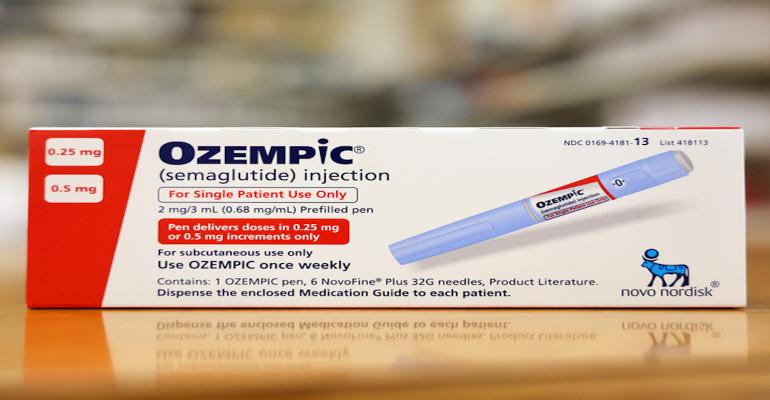The rapid rise in the use of GLP-1 weight-loss medications is leading to a decline in the purchase of snack foods, breakfast items, bakery items, and more, according to a report released Tuesday by data analytics firm Numerator.
It’s just the beginning, according to Numerator Chief Economist Dr. Leo Feler, who said the popularity of the drug is still in the “early stages.”
Feler noted that the analysis of 100,000 users of GLP-1 drugs such as Ozempic shows that the medications, originally developed for diabetes management, are now primarily being used as a diet drug.
"A year ago, almost all users of these medications were using it for diabetes management, and only 10% were using it for weight loss. Now, almost 50% of those using these medications are doing so for weight loss,” Feler said.
“Right now, with all of the increase we've seen in people using these medications, there are another 20% of households saying they're interested in taking these medications for weight loss in the future -- they're just waiting for prices to come down and to see how safe and effective these medications are."
The study shows spending is down across all areas of the grocery store for those on GLP-1 drugs, but the biggest spending reductions are coming from shoppers using the medications to lose weight.
Those using GLP-1 drugs over the last three months, exclusively with the goal of losing more than 15 pounds, reduced their overall grocery spending by 7.7%, while those using them solely for diabetes management cut their spending by 2.6%. The biggest decline (down 11%) came from those aiming to lose 15 pounds or less.
When considering ice cream sales only, those exclusively using GLP-1 drugs for diabetes management increased their purchases by 1.7%, while those looking to lose 15 pounds or more cut their spending by an average of 3%, and those aiming to lose 15 pounds or less cut their spending by 9%.
The group with the goal of losing up to 15 pounds reduced their snack purchases by 8.8% and their frozen foods purchases by 9.5%. Those aiming to lose more cut snack spending by 7% and frozen foods spending by 4.7%.
The rate of change between users and non-users varied by department with some experiencing declines up to 20%, the report noted.
Departments that experienced a 10-20% drop in purchases by those using the medications for weight loss include: beans and grains; deli and prepared foods; packaged bakery; in-store bakery; snacks; breakfast; refrigerated foods; and meat.
Those departments that dropped 5-10% on average for GLP-1 users include: condiments; candy; dairy; pasta and noodles; produce; and canned foods.
The report comes about two months after Walmart CEO John Furner told Bloomberg News that the use of Ozempic has led to a “slight change” in grocery shopping.
“We definitely do see a slight change compared to the total population, we do see a slight pullback in overall basket,” Furner told Bloomberg. “Just less units, slightly less calories.”





